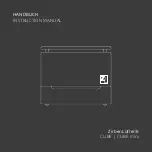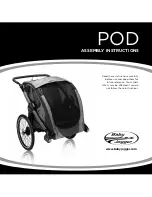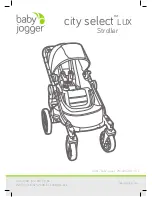
Page 20 TETHERED CONTROLLER MX32, RADIO CONTROLLER MX32FU
This Cab
– STOP & OFF Management
This Controller - HW/SW Version Info
Name:
default “MX32“; a new unique name for the
controller can be entered here
Language:
Selection of the languages available in
this device (loaded from the flash drive or already
present in the controller). Currently German /
English.
Style:
System and function symbols come in four
different styles (see
chapter “Styles”); two can be
loaded in to the controller and are available here
for selection.
UID
:
factory-assigned serial number (Read-only)
HW
:
Hardware Version (Read-only),
SW
:
Software Version with Date (Read-only)
RF HW/FW
:
SW Version Radio (Read-only)
Date (Y.M.D):
The date for the internal calendar in the
controller
(NOT the system’s clock, see MX10 manual).
Time (H.M.S):
Internal clock setting
(NOT the system’s clock, see MX10 manual).
Fast clock:
Acceleration factor compared to real time.
E-Timeout:
The time the controller remains in the E
menu page after pressing the
E-Key
(from
the
LOCO
or
SWI
mode) before the screen
returns to the previous page if no further se-
lection is made.
Screen Saver:
A
screen saver
is activated after the
controller sits idle for the time entered here:
Name and address number moves randomly
around the screen.
Idle standby:
Only useful when the controller is oper-
ated in
radio mode
: if the controller sits idle for
the time specified here, a special
stand-by
screen
opens with a clock counting down the
seconds until shutdown (see “Stand-by time”).
Standby-time:
Time in seconds for the timer in the
stand-by screen
*)
to count down to 0. During this
time the controller can be returned to normal opera-
tion
(by pressing the
A-Key
) without going through the
boot-up sequence.
.
BCS Mode
Type of Broadcast Stop (BCS)
= BCS emergency: Emergency broadcast stop
= BCS SS0: Normal broadcast stop
**)
S-Key short
= Single stop
: Emergency stop for “your” engine
= Broadcast stop: Stops all engines per BCS mode
S-Key long
= Broadcast stop: Stops all engines per BCS mode
= Track power OFF: Track 1 or track 1+2
R-Key
= Direction: Changes direction at any speed
= Single stop: Direction key initiates an emergency
stop for “your” running engine; direction change only at
stand-still (useful when S-Key = BCS).
Above speed step:
The effect of the R-Key described above as a
single stop key applies only above the speed step defined
here (e.g. changes direction immediately at lower speeds
).
This Controller
– Operating Mode
LOCO
Scrolling wheel
= Fine control: the speed (which is
normally set with the slider) can be fine-tuned in
small steps of +/- 10% of the selected speed
steps (14/28/128).
= Vehicle selection: scrolling through the
recall memory (
LoR
) with immediate activation
even if the memory window is NOT visible
*)
= No function.
*)
The above selections are not valid when the recall memory
(
LoR
) window is open, because the scrolling wheel is then used
exclusively to scroll through the list (= for selecting a vehicle,
but in this case also requires the
A-Key
to activate the ad-
dress).
Rocker Switch
= No Function.
= Fine control: the speed (which is normally set with the speed slider) can be
fine-tuned in small steps of +/- 10% of the selected speed steps (14/28/128).
= Vehicle selection; scrolling through the recall memory (
LoR
) with immediate
activation even if the memory window is NOT visible.
This Cab
– Date, Time, Timeouts
**)
BCS (= Broadcast stop) applies to all engines but can be issued as emergency stops or “normal” stops (as programmed in CV
#4). “Emergency” stops trains faster but may also cause derailments in tight curves; in such cases a non-emergency BCS
would be better suited.
NOTE:
There is no track power “OFF”
with the Roco Z21, only “STOPP” (as in
broadcast stop per ZIMO terminology).
*)
The Stand-by screen appears when power is
lost (i.e. cable unplugged) or when the cab sits
idle while in the radio mode (in order to
conserve battery power)
















































